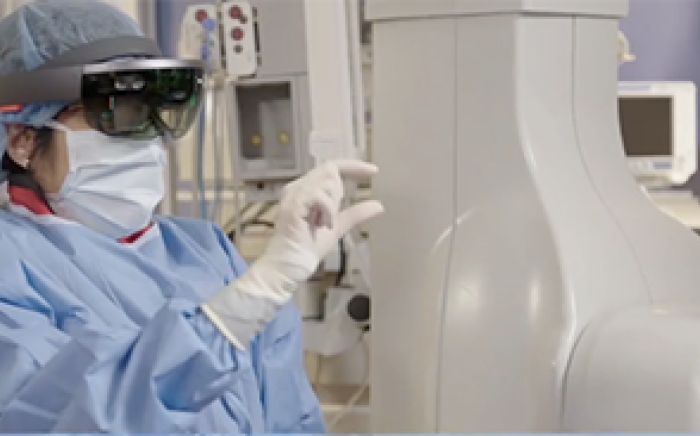 The Rankins’ bustling household includes four children: Camry, 15; Camren, 13; Camari, 11; and Camar, 6. With the mix of ages, squabbles and sibling rivalry would be the norm in most families. But not in this family. The Rankins have a deep, loving bond that makes parents Candace and Rodnik proud—even though the journey to build that bond was difficult and paved with sacrifices.
The Rankins’ bustling household includes four children: Camry, 15; Camren, 13; Camari, 11; and Camar, 6. With the mix of ages, squabbles and sibling rivalry would be the norm in most families. But not in this family. The Rankins have a deep, loving bond that makes parents Candace and Rodnik proud—even though the journey to build that bond was difficult and paved with sacrifices.
Two of their four children—Camren and Camar—were born with sickle cell disease, a chronic, unpredictable, and life-threatening disease. Sickle cell disease (SCD) is an inherited disorder that causes red blood cells to become hard and sticky and form a crescent shape. Cold temperatures, stress or simple viruses can trigger severe symptoms such as infections and intense pain. Stroke is also a risk. Ultimately, the disease worsens over time and can affect all parts of the body. While it primarily affects African-Americans, any ethnicity or race can have SCD.
Following Camren and Camar’s diagnoses, the years blurred together with numerous hospital stays for the boys. Candace estimates the two brothers have been in the hospital at the same time at least 10 to 15 times.
“St. Louis Children’s Hospital has really helped our family,” Candace says. “They taught me about the disease, and gave me routines and a pain plan for my sons.”
 The Sickle Cell Program at St. Louis Children’s Hospital is the largest program of its kind in Missouri. Monica Hulbert, MD, a Washington University pediatric hematologist-oncologist, is the director of the Pediatric Sickle Cell Disease Program at St. Louis Children’s Hospital.
The Sickle Cell Program at St. Louis Children’s Hospital is the largest program of its kind in Missouri. Monica Hulbert, MD, a Washington University pediatric hematologist-oncologist, is the director of the Pediatric Sickle Cell Disease Program at St. Louis Children’s Hospital.
“People with SCD can have many complications and need specialized care,” she says. “It matters to be at a center with the most experience. We assign a primary hematologist to each patient and develop strong relationships with families. I believe this helps us provide better care.”
Dr. Hulbert has been Camren and Camar’s doctor for the past seven years and has seen the family through many ups and downs.
“Camren and Camar had the same diagnosis, but different manifestations of the disease,” Dr. Hulbert explains. “Camren had more frequent pain, including one of the worst pain crises I had ever seen in a child, while Camar rarely had pain, but his testing showed he was at high risk of stroke.”
Both boys were getting sicker quickly. Dr. Hulbert determined they could be candidates for a bone marrow transplant to cure their sickle cell disease if one of their sisters was a match to donate bone marrow. In a family, each sibling without sickle cell disease has only a 25 percent chance of matching. She encouraged the family to be tested to see if anyone was a match. Amazingly, their sister Camari was an ideal match for both Camren and Camar.
The Rankins became the first family at St. Louis Children’s Hospital who had two children transplanted from the same sibling. Less than 10 percent of children with sickle cell disease will have a sibling match while the chances of a sibling match for more than one family member is around 3 percent.
However, Dr. Hulbert is careful to point out that most children won’t have a transplant because they don’t have a match. In addition, she explains, physicians and families have to balance the risk of transplant with the risk of not having a transplant.
“It’s a hard decision because transplant has more short-term risks, including a risk of dying from complications. Yet without a transplant, most people with sickle cell disease will only live until their 30s or 40s. The only cure for SCD right now is a bone marrow transplant.”
Dr. Hulbert says her colleague, Shalini Shenoy, MD, is an advocate in the field of transplant for sickle cell disease. “Because the sickle cell team and transplant team collaborate to optimize pre- and post-transplant care, we feel more confident offering transplants at St. Louis Children’s Hospital.”
Dr. Shenoy is a Washington University pediatric hematologist-oncologist and director of the St. Louis Children’s Hospital Bone Marrow Transplant Program. “Bone marrow transplant is curative but we have to be judicious in using it,” she says. “Patients need to understand the process and the pros and cons, and need to have both medical and social support structure in place, in addition to having a suitable donor. We provide families a lot of education and have had good success with transplants at St. Louis Children’s.”
Currently, Dr. Shenoy is conducting clinical trials related to transplant protocols with the goal of increasing the number of children with SCD who could safely receive bone marrow transplants.
Because Camren was the sickest, he was the first Rankins brother to have a transplant in July 2017. One year and a day later, Camar also had a bone marrow transplant—all thanks to their sister Camari who never hesitated to help her brothers.
Today, Camren is doing well and is looking forward to playing in the snow this winter for the first time in his life. He hopes to become an architect when he grows up. Camar is back to being an energetic 6-year-old, but he won’t be ready to jump in the snow quite yet this winter since he just had his transplant in July 2018.
And Camari, the heroine in this story? Between ballet and violin lessons, she was recently honored through her school after being selected out of hundreds of other children for the “Do the Right Thing” award. In September 2018, she also received an award at the Sickle Cell Association’s Annual Sickle Cell Gala for being committed to the cause. In addition, Camari inspired her older sister, Camry, to join the bone marrow donor registry so she can one day help someone else.








